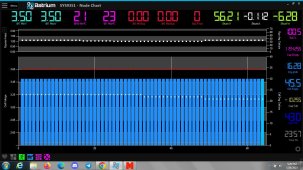jledwards0117
New Member
I currently have a bank of 3 paralleled 12V 206ah batteries, each with a 100ah discharge rate. I want to add to my capacity by adding 3 12V 300ah batteries, each with a 200ah discharge rate. All batteries have a 12.8 nominal voltage.
While the current bank is in a traditional battery to battery parallel connection, I am also planning to change this and have each of the batteries, new and old, be connected directly to a Lynx Distributor/Lynx Shunt setup.
Any concerns with this proposed configuration, owing to the differing capacities/discharge rates?
While the current bank is in a traditional battery to battery parallel connection, I am also planning to change this and have each of the batteries, new and old, be connected directly to a Lynx Distributor/Lynx Shunt setup.
Any concerns with this proposed configuration, owing to the differing capacities/discharge rates?



